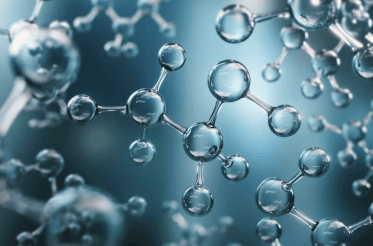Question
a.
To reduce overall heat transfer
b.
To increase overall heat transfer
c.
To increase density
d.
To reduce density
Posted under Heat Transfer
Interact with the Community - Share Your Thoughts
Uncertain About the Answer? Seek Clarification Here.
Understand the Explanation? Include it Here.
Q. Radiation shield are used between the emitting surfaces such that
Similar Questions
Explore Relevant Multiple Choice Questions (MCQs)
Q. Which of the following can be used as a radiating shield?
View solution
Q. Determine the net radiant heat exchange per m 2 area for two infinite parallel plates held at temperature of 800 K and 500 K. Take emissivity as 0.6 for the hot plate and 0.4 for the cold plate
View solution
Q. Two parallel square plates, each 4 m² area, are large compared to a gap of 5 mm separating them. One plate has a temperature of 800 K and surface emissivity of 0.6, while the other has a temperature of 300 K and surface emissivity of 0.9. Find the net energy exchange by radiations between the plates
View solution
Q. The furnace of a boiler is laid from fire clay brick with outside lagging from the plate steel, the distance between the two is quite small compared with the size of the furnace. The brick setting is at an average temperature of 365 K whilst the steel lagging is at 290 K. Calculate the radiant heat flux. Assume the following emissivity values
For brick = 0.85
For steel = 0.65
View solution
Q. Two black discs each of diameter 50 cm are placed parallel to each other concentrically at a distance of one meter. The discs are maintained at 1000 K and 500 K. Calculate the heat flow between the discs when no other surface is present
View solution
Q. Two black discs each of diameter 50 cm are placed parallel to each other concentrically at a distance of one meter. The discs are maintained at 1000 K and 500 K. Calculate the heat flow between the discs when the disks are connected by a cylindrical black no-flux surface
View solution
Q. A cavity in the shape of a frustum of a cone has diameter 30 cm and 60 cm and the height is 80 cm. If the cavity is maintained at temperature of 800 K, determine the heat loss from the cavity when the smaller diameter is at the bottom
View solution
Q. A conical cavity of base diameter 15 cm and height 20 cm has inside surface temperature 650 K. If emissivity of each surface is 0.85, determine the net radiative heat transfer from the cavity
View solution
Q. A cylindrical cavity of base diameter 15 cm and height 20 cm has inside surface temperature 650 K. If emissivity of each surface is 0.85, determine the net radiative heat transfer from the cavity
View solution
Q. What is the unit of coefficient of radiant heat transfer?
View solution
Q. Which of the following have a continuous spectrum?
View solution
Q. Which of the following is/are known as selective absorbers?
View solution
Q. Which layers participated in the process of thermal radiation through solids and liquids?
View solution
Q. Some of the gases have low emissive power and absorptivity. They are considered practically diathermanous. Which of the following option is true?
View solution
Q. Consider a beam of monochromatic radiation at wavelength λ that enters a layer of absorbing gas. As the beam passes through the gas layer, its intensity
View solution
Q. When a gas or vapor is in the process of oxidation and combustion, it is called as
View solution
Q. The monochromatic absorption coefficient depends upon
(i) Temperature
(ii) Time
(iii) Pressure
(iv) Wavelength
Identify the correct option
View solution
Q. Which one of the following is not extremely inert to thermal radiation?
View solution
Q. Consider a beam of monochromatic radiation at wavelength λ that enters a layer of absorbing gas. As the beam passes through the gas layer, its intensity is given by
View solution
Q. Which one is having highest value of fouling factor?
View solution
Recommended Subjects
Are you eager to expand your knowledge beyond Heat Transfer? We've handpicked a range of related categories that you might find intriguing.
Click on the categories below to discover a wealth of MCQs and enrich your understanding of various subjects. Happy exploring!








